Hormuz Island offers a unique blend of natural beauty, cultural heritage, and adventure, making it a captivating destination for travelers seeking a distinctive experience on Iran’s southern coast. This small island, located in the Persian Gulf off Iran’s southern coast, is culturally rich and home to a diverse population of Persians, Arabs, and indigenous Hormuzis. The locals are known for their warm hospitality and traditional crafts such as pottery and weaving. Fishing, maritime trade, tourism, hospitality, handicrafts, agriculture, and public sector employment are the main industries on Hormuz Island.
On Hormuz Island, you can find unique red edible soil and over 70 colorful minerals. The island offers wonderful views, untouched nature, and various attractions, making it a beautiful destination. Winters here are pleasantly mild, providing a perfect climate for exploring the island’s entertainment, lifestyles, traditions, clothing, and local dishes of southern Iran. Hormuz Island is part of Hormozgan Province, located in the Strait of Hormuz, 8 km off the Iranian coast. Despite being sparsely inhabited, some development has taken place since the late 20th century.
As you explore Hormuz Island, you’ll encounter its rich cultural heritage through local traditions, clothing, and delicious southern Iranian cuisine. In this blog post, well explore Hormuz Island, the hidden gem in the Persian Gulf.
History of Hormuz Island
Hormuz Island has a rich history that spans thousands of years, deeply rooted in its strategic location at the entrance of the Persian Gulf. This prime position made it a vital trading hub in ancient times, facilitating commerce between Iran, the Arabian Peninsula, and the Indian subcontinent. Known as Organa to the ancient Greeks and Jarun during the Islamic period, the island later took the name Hormuz from a significant mainland port.
Over centuries, various civilizations, including the Persians, Arabs, and Portuguese, have left their mark on the island. Around 1300, the ruler of the mainland Hormuz moved his residence to the island to evade Mongol and Turkish attacks, transforming it into a fortified settlement. This strategic move brought prosperity and growth, attracting renowned travelers like Ibn Battuta.
The Portuguese era is a prominent chapter in Hormuz Island’s history. In 1507, Afonso de Albuquerque captured the island for Portugal, which then became a crucial stopover for their ships traveling to India and beyond. The Portuguese built the Fort of Our Lady of the Conception, which remains a reminder of this period.
Despite facing sieges, such as the one led by Ottoman admiral Piri Reis in 1552, the island remained under Portuguese control for over a century. The decline of Hormuz began under Shah Abbas I of Persia, who shifted focus to developing the mainland port of Bandar Abbas. This shift led to the island’s reduced significance as a trading center, though it continued to export rock salt and iron oxide.
Today, visitors can explore the remnants of this rich history, including the Portuguese Fortress and traditional architecture, while enjoying the island’s unique natural beauty and cultural heritage.
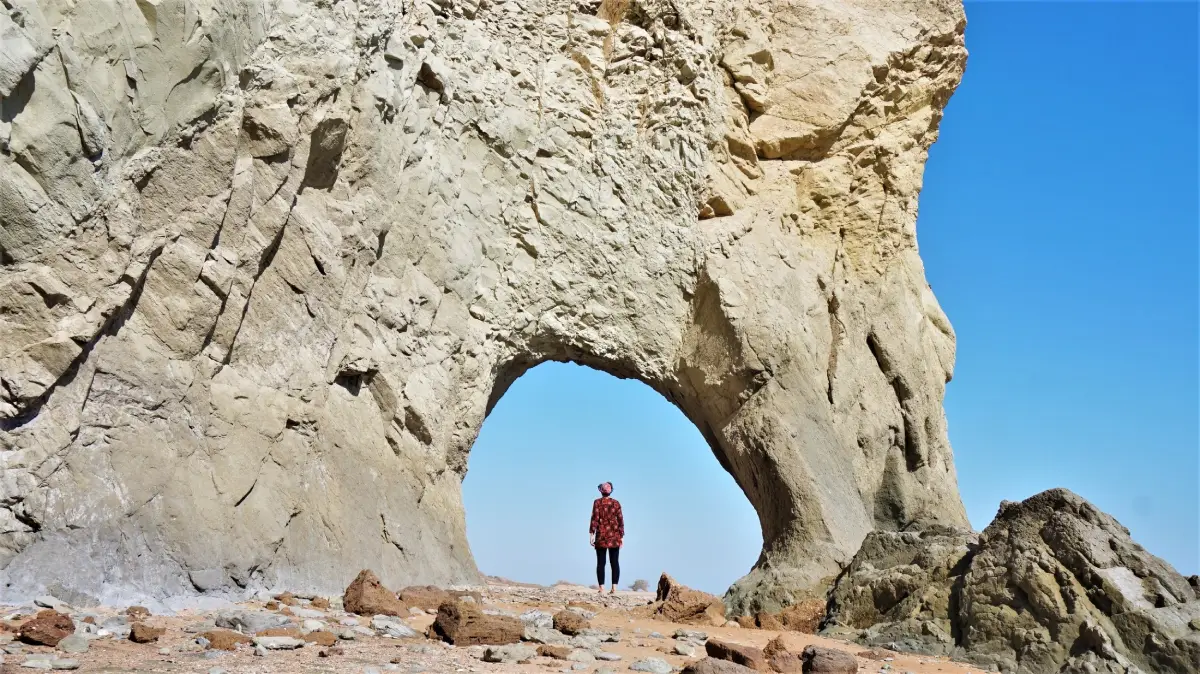
People of Hormuz
Hormuz Island has a diverse population that reflects its rich cultural tapestry. The island is home to Persians, Arabs, and the indigenous Hormuzis, each contributing to its unique cultural mosaic. Persians form the majority and are traditionally associated with Iran, bringing a deep history and culture to the island.
The Arab population is primarily concentrated along the coastal areas, engaging in fishing and maritime trade and maintaining distinct cultural practices. The indigenous Hormuzis have a unique culture and heritage tied closely to the island’s history, speaking a dialect that is a variation of Persian. This blend of ethnic groups enriches the island’s cultural landscape and is a significant part of its charm.
The people of Hormuz Island are renowned for their warm hospitality and friendliness towards visitors. They take great pride in their island’s natural beauty, cultural heritage, and historical significance. Traditional crafts such as pottery, textile weaving, and basketry are still actively practiced, preserving the island’s artisanal heritage.
The island’s vibrant history and cultural diversity offer visitors a fascinating glimpse into a community that has evolved over the centuries. Exploring Hormuz Island, you will encounter its rich traditions and friendly locals, making your visit an enriching experience.

Climate of Hormuz Island
Hormuz Island experiences a hot and arid climate, typical of the southern regions of Iran. Summers are extremely hot, with temperatures often exceeding 40°C (104°F), particularly in August when they can soar above 46°C (115°F). High humidity levels during the summer months add to the intense heat, making it a challenging time for outdoor activities. Despite the extreme summer temperatures, the island transitions to a more moderate climate during the autumn, winter, and spring months. These seasons offer milder and more comfortable weather, making them ideal times for visitors to explore the island’s natural beauty and cultural attractions.
The island, located near Bandar Abbas and Qeshm Island, has virtually no winter, and its long summers dominate the climate profile. However, the weather is relatively pleasant during the cooler months, with mild temperatures and lower humidity. This period is perfect for enjoying the island’s stunning landscapes, vibrant cultural heritage, and outdoor activities without the extreme heat of summer. Whether you’re interested in exploring the island’s colorful soil formations, historic sites, or beautiful beaches, scheduling your trip during the autumn, winter, or spring will ensure a more comfortable and enjoyable experience.

Best Time to Visit Hormuz Island
The best time to visit Hormuz Island largely depends on your preference for weather and budget. If you prefer milder weather, the ideal time to visit is from early autumn to late spring. During these months, the climate is generally moderate, making it comfortable to explore the island’s attractions. The cooler temperatures allow you to fully enjoy outdoor activities such as visiting the vibrant Rainbow Valley, exploring the historic Portuguese Fortress, and relaxing on the beautiful beaches without the discomfort of extreme heat.
For those who can handle the island’s heat and high humidity, summer can also be a good time to visit. Although the temperatures can be intense, summer offers the advantage of fewer crowds and more affordable travel costs. You can experience the stunning landscapes and unique charm of Hormuz Island with a bit more solitude. The vibrant colors of the soil and rocks are especially striking under the summer sun, providing a unique perspective on the island’s natural beauty. Whether you choose to visit during the cooler months or in the heat of summer, Hormuz Island promises a memorable experience with its rich history and breathtaking scenery.
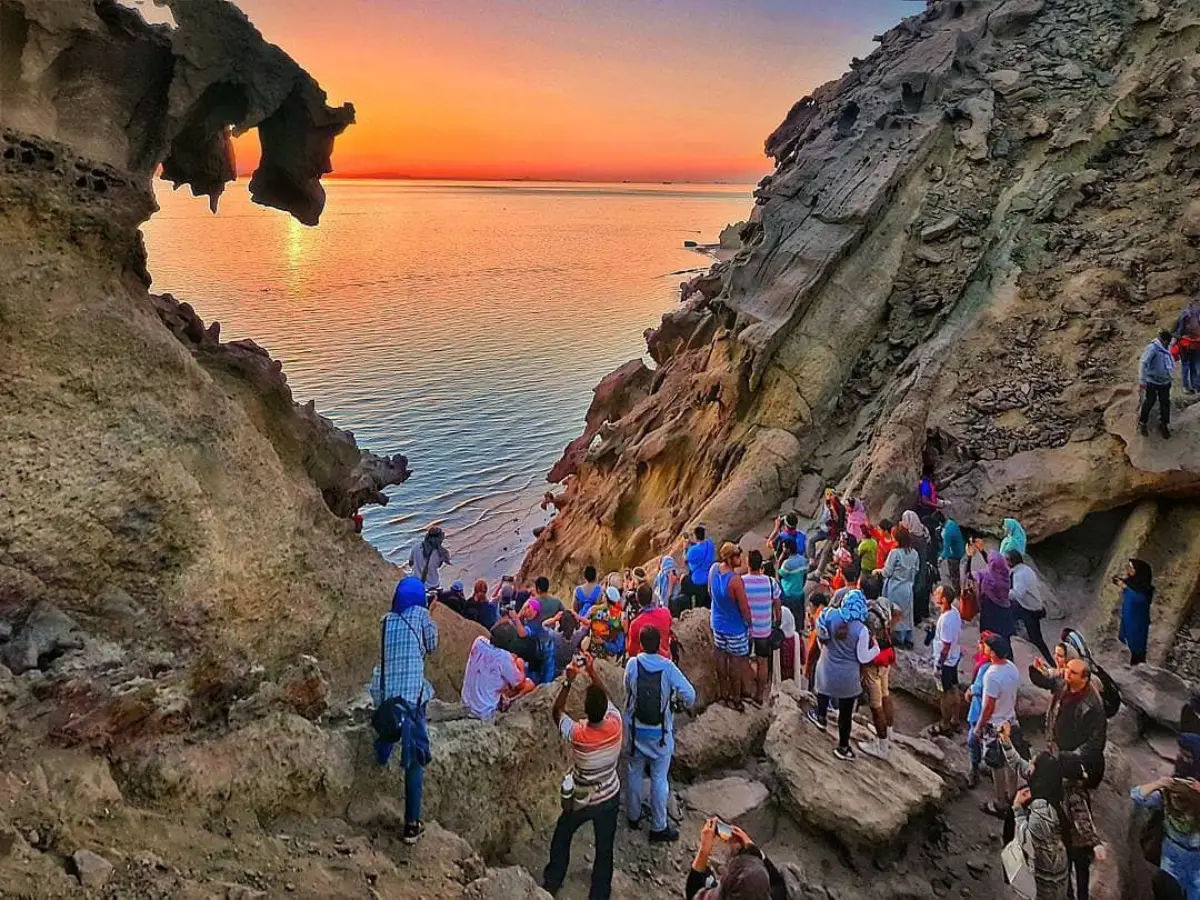
Nature of Hormuz
Hormuz Island is a haven for nature lovers and diving enthusiasts, offering a rich and diverse marine ecosystem. The surrounding waters teem with vibrant coral reefs, tropical fish, turtles, dolphins, and various species of migratory birds. These natural wonders provide excellent opportunities for snorkeling, scuba diving, and boat tours, allowing you to explore the underwater beauty and observe the fascinating marine life up close. The island’s clear waters and abundant sea life make it a prime destination for those looking to immerse themselves in nature’s splendor.
The unique geological formations of Hormuz Island are among its most striking features. The vibrant colors of the soil and rocks, resulting from the presence of minerals like iron oxide, sulfur, and copper, create a visually stunning landscape. The coastlines showcase an array of red, orange, yellow, and white hues, making the island a paradise for photographers and nature enthusiasts. Among the island’s natural attractions, the Rainbow Valley stands out with its breathtakingly colorful rock formations, while the Valley of Statues offers naturally sculpted rocks that resemble various shapes and figures.
The salt dome caves, known as the “Naaz Islands,” add to the island’s unique geological appeal, allowing visitors to explore these fascinating formations. Hormuz Island’s remarkable natural beauty and diverse attractions make it a must-visit destination for anyone looking to experience the wonders of nature.
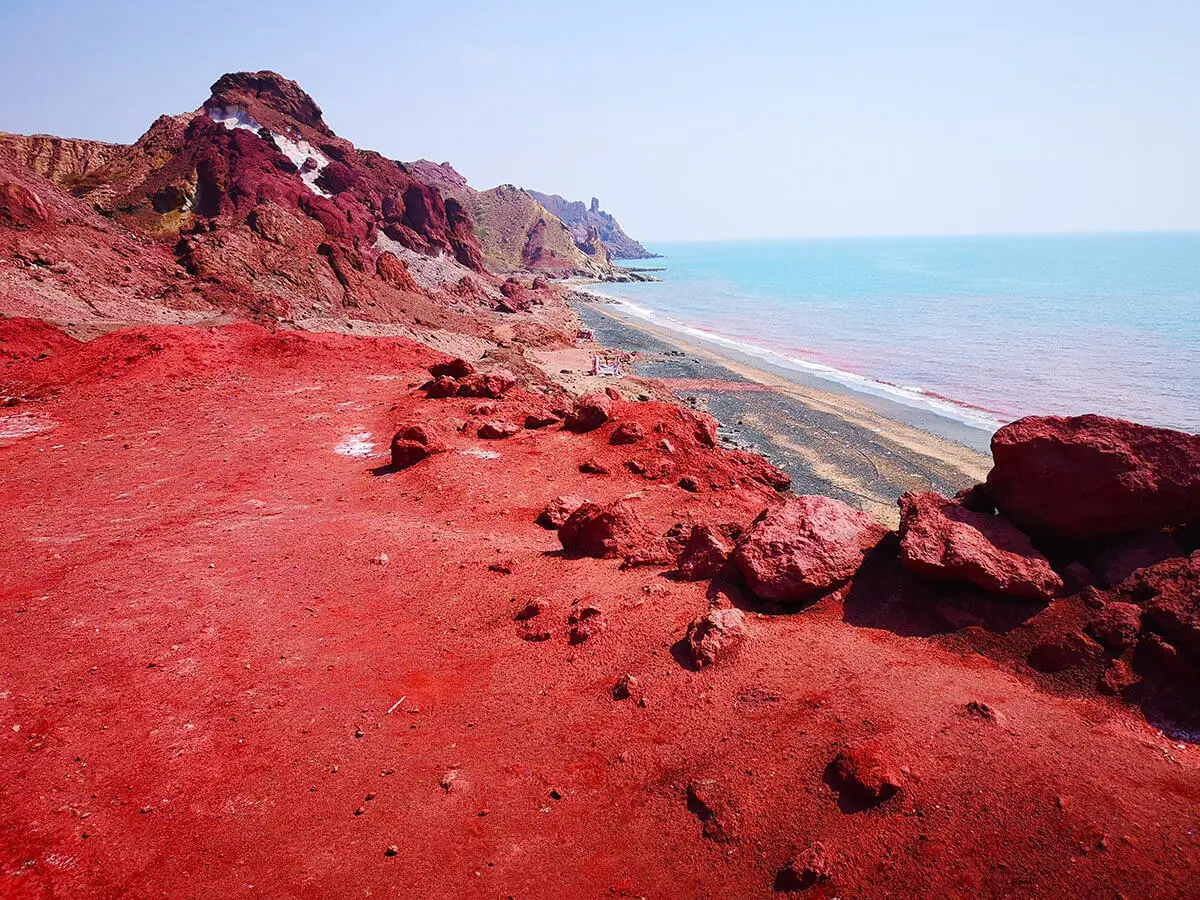
Tourist Attractions in Hormuz Island
Portuguese Fortress
The Portuguese Fortress, also known as Hormoz Castle, is a significant historical site on Hormuz Island. Built in the 16th century by the Portuguese, it served as a military stronghold and a base for controlling trade in the region. The fortress stands as a testament to the island’s colonial past and offers panoramic views of the surrounding area. Visitors can explore the well-preserved structure and imagine the strategic importance it held during its time.
Valley of Sculptures
The Valley of Sculptures called the Valley of Imagination or Darreye Tandis-ha, is a natural wonder on Hormuz Island. This site features tall rocks sculpted into strange and fascinating shapes by the elements. With some imagination, you can see formations resembling animals, such as dragons, birds, and mythical creatures. Located on a bluff, the valley offers fantastic coastline vistas, making it a must-visit for nature lovers and photographers.
Rainbow Valley
Rainbow Valley is a mesmerizing attraction that highlights why Hormuz Island is often nicknamed Rainbow Island. The valley showcases over 70 shades of minerals, creating a stunning palette of colors. This geological marvel is a perfect subject for geology studies and a visual feast for visitors. The vibrant red, orange, yellow, and more hues make this spot a prime location for a unique and colorful experience.
Hormuz Sea Caves
The sea caves of Hormuz Island are famous for their imposing red soil and epic geological formations. As you travel along the coastal road, you’ll encounter a kaleidoscope of colors in the cliffs, mountains, and caves, including blue, purple, yellow, white, and glittering gold. These tranquil beaches and natural archways in the rock create a serene and picturesque environment. The Red Beach is a notable example, offering a peaceful retreat with its striking red sands.
Silence Valley
Silence Valley is renowned for its profound tranquility and stunning natural beauty. To reach this serene spot, you must walk a few hundred yards, where you’ll find a salt landscape and a rocky wall at the end of the path. The valley’s unique beauty and specific silence make it a perfect place to reflect and appreciate nature’s wonders. The stillness and stark landscape provide a deeply calming experience.
Silver and Red Beach
The Silver and Red Beach of Hormuz Island is one of Iran’s most wondrous natural sites. The red soil of the beach has significant economic value, historically used in various industries such as dyeing, cosmetics, glass, and ceramics. The beach’s striking red sands and the shimmering effect of the silver elements create a visually stunning coastline. The contrast of colors against the backdrop of the sea makes it a favorite spot for visitors and photographers.
Salt Goddess Cave and Mountain
The Salt Goddess Cave and Mountain is one of the most beautiful natural attractions on Hormuz Island. The southern part of the island is covered with huge salt crystals, creating unique natural beauty scenes. The Salt Mountain features colorful textures shaped by erosion over time. A stream flows beneath the mountain against an orange backdrop, adding to the area’s charm. The stream’s pleasant sound enhances this natural wonder’s serene atmosphere.
Naaz Islands
The Naaz Islands are a notable attraction on Hormuz Island, known for their salt dome caves and unique geological formations. These islands offer visitors the chance to explore fascinating natural structures and enjoy the tranquility of the surrounding waters. The caves are particularly impressive, providing a glimpse into the island’s geological history. The Naaz Islands are a must-visit for those interested in geology and natural beauty.
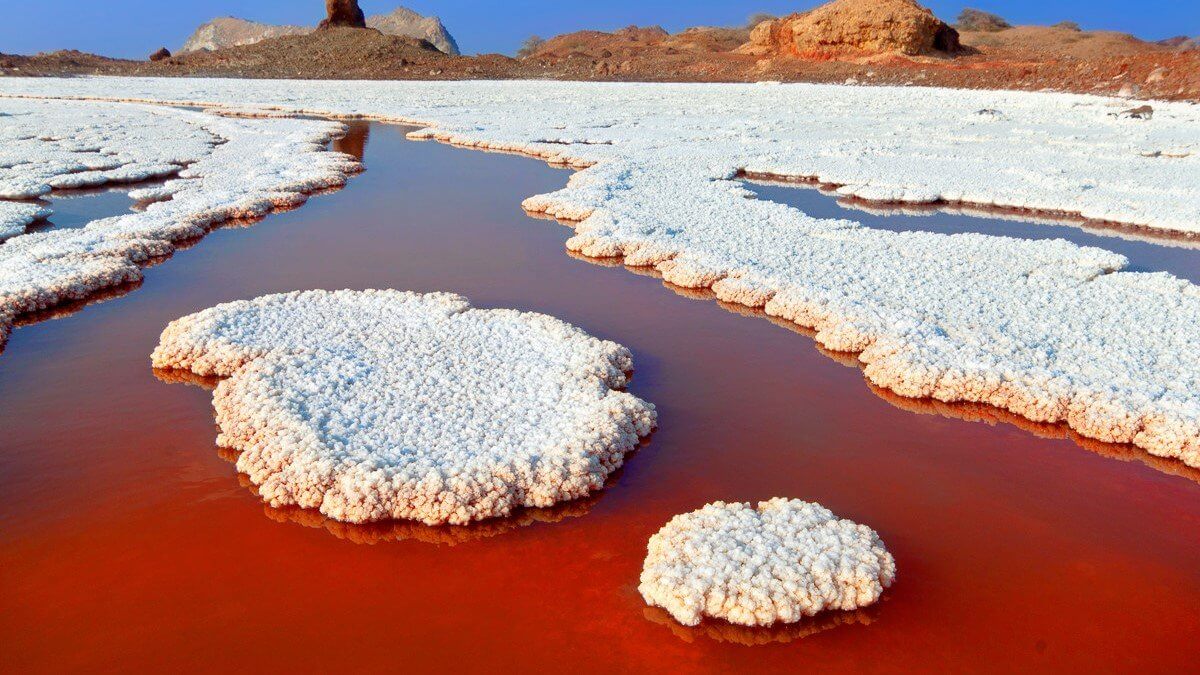
Hormuz Local Cuisine
The cuisine of Hormuz Island is rich and diverse, reflecting its coastal location and cultural influences. Seafood is a major highlight, with fresh fish, shrimp, and lobster being staples. Local dishes often feature grilled fish, fish stews, and fish kebabs, providing visitors with a taste of the island’s bountiful marine offerings. One must-try local specialty is “Sikkeh Sangi,” a flavorful seafood stew made with a blend of local herbs and spices. Using fresh ingredients and traditional cooking methods ensures that each dish is authentic and delicious.
Hormuz Island offers unique culinary experiences with its vibrant red rice, known as “Seyahkhezri.” This rice has a natural reddish hue and is a staple accompaniment to many meals. Additionally, the island’s date palms are utilized in creating various sweets and desserts, such as date palm syrup, date-filled pastries, and date cakes. Local bread, “Shirmal,” a slightly sweet bread, is often enjoyed with meals. Alongside these island specialties, traditional Persian dishes like kebabs, khoresht, and rice dishes such as biryani or pilaf are also available, providing a well-rounded culinary experience for visitors.

Handicrafts in Hormoz Island
Hormuz Island boasts a rich tradition of handicrafts that reflect the island’s cultural heritage and the skills of its artisans. Soozi weaving stands out as a traditional craft where artisans create colorful textiles using a specific type of loom. These vibrant, patterned fabrics are often turned into traditional clothing, accessories, and decorative items, showcasing the intricate craftsmanship of the island’s weavers.
Salt crystal handicrafts highlight the island’s unique connection to natural resources. Local artisans craft decorative objects, salt lamps, and sculptures using salt crystals. The translucent quality of the salt crystals adds a beautiful effect to these artistic creations. Pottery and ceramics are other significant craft on Hormuz Island. Artisans produce vibrant and intricately patterned bowls, plates, cups, and decorative pieces using traditional techniques.
The coastal location of Hormuz Island inspires the creation of shell and coral jewelry. Artisans collect shells, coral, and other treasures from the seashore to craft unique necklaces, bracelets, and earrings, reflecting the island’s connection to the sea. Hand-painted tiles, a hallmark of Iranian art and architecture, are also crafted on the island. Skilled artisans create intricately designed tiles featuring geometric patterns, floral motifs, and scenes inspired by Persian art, used both in buildings and as decorative items.
Miniature painting, a traditional Persian art form, has its unique style on Hormuz Island. Artisans create detailed and colorful miniature paintings on various surfaces, such as paper, wood, and ceramics. These paintings often depict historical and cultural scenes, as well as elements from nature. Exploring the local handicrafts on Hormuz Island is a wonderful way to appreciate the island’s artistic traditions and support the local artisans. You can find these crafts in local markets, shops, and art studios, where artisans often share their knowledge and the stories behind their creations.

Travel Tips for Hormoz Island
When visiting Hormuz Island, packing plenty of cool clothing is crucial, especially if traveling during the warmer months. The long walks around the island to enjoy the natural scenery will require frequent clothing changes. If you plan to camp on Hormuz’s beaches, always ask locals about the tide levels to avoid being caught off-guard by rising waters, which could harm you or your electronic devices. A power bank is essential to avoid inconvenience and don’t forget sunscreen and a wide-brimmed hat for sun protection.
Avoid taking Hormuz’s soil as a souvenir, as it can damage the island’s environment over time and is illegal. Transporting soil through Bandar Abbas Airport is prohibited. Respect the locals and their living environment as they continue their lives after tourist visits. Treat their homes with the same respect you would expect for your own.
Hormuz Island is accessible via several convenient travel options. The closest airport is Bandar Abbas International Airport (BND) on the mainland, from which you can take a short domestic flight to Hormuz Airport (HOR) on the island. This flight typically lasts around 20 minutes, making it a quick and efficient choice.
Another popular way to reach Hormuz Island is by sea. Regular ferry services operate between Bandar Abbas and the island; the journey takes about one hour. This option is favored by both tourists and locals for its scenic views and affordability. For those seeking a more personalized experience, hiring a private boat charter from Bandar Abbas is a great alternative. Local companies offer boat rental services, allowing you to travel at your own pace and enjoy the journey to the island.
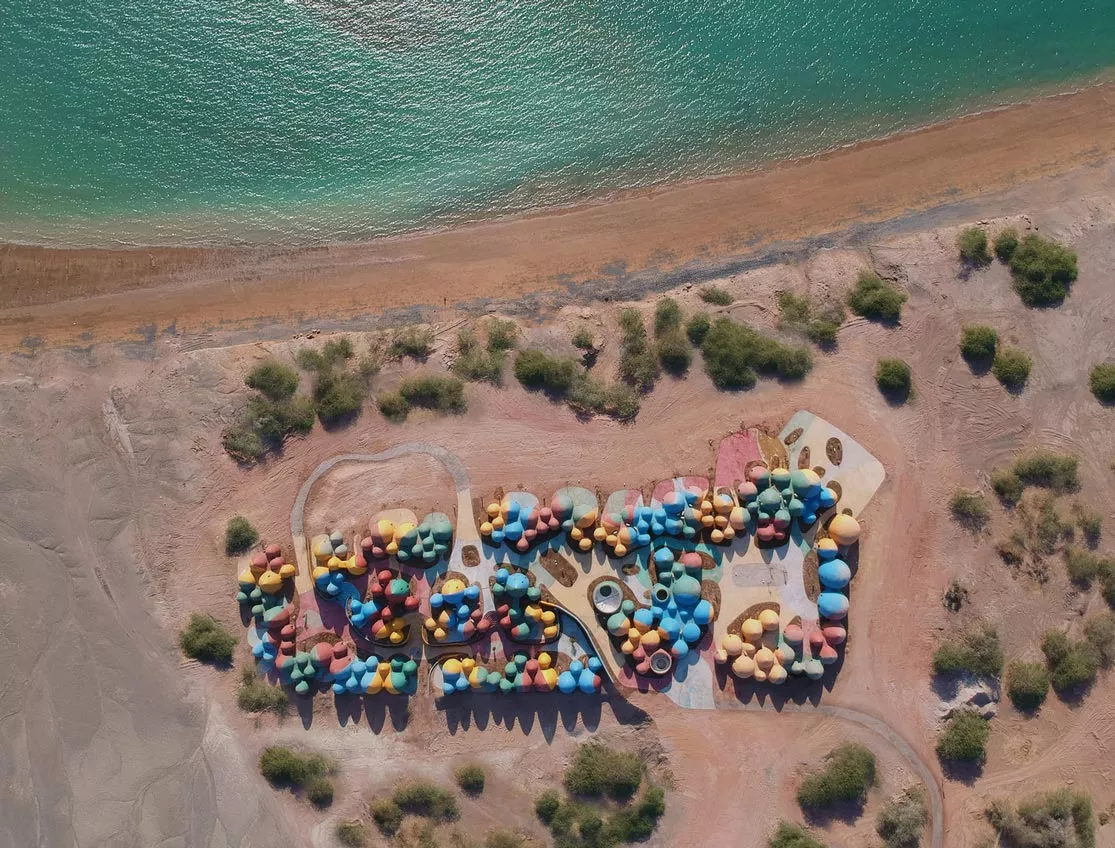
Plan an Unforgettable Experience in Hormuz
Visit Our Iran offers immersive Hormuz tours with comprehensive services to make your trip seamless and enjoyable. Our packages include everything you need, from flights and accommodation to visas, insurance, transfers, SIM cards, debit cards, and car rentals.
Explore the stunning Hormuz Island with our personalized tours designed to cater to your interests and schedule. Whether you’re looking to soak in the island’s natural beauty or delve into its rich cultural heritage, we ensure a memorable and hassle-free experience.
